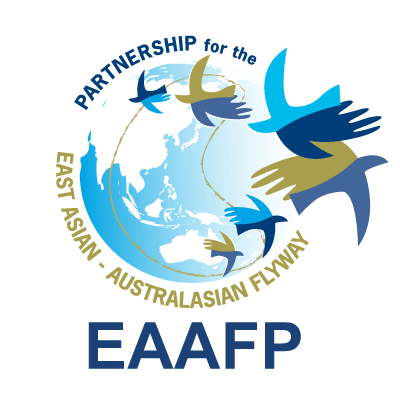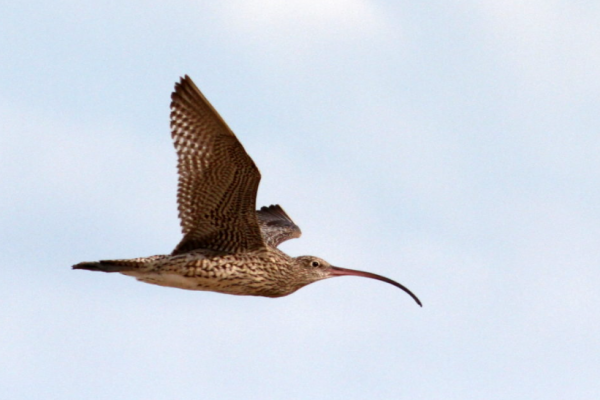-
Partners
The EAAF Partnership is made up of Partners open Governments, International Non-Government Organisations (NGOs) and Inter-Governmental organisations, that agree to endorse the text and supporting the objectives and actions under this Partnership. Membership is open to other Governments, International NGOs, Inter-Government organisations and members of the international business sector upon application and agreeing to endorse […]
Continue reading -
EAAFP at CMS COP12
Spike Millington, Chief Executive The theme of 2017’s World Migratory Bird Day was “Their Future is Our Future”, highlighting the interconnectedness of nature, people and birds. It was a popular theme and was selected to link with the theme of the Twelfth Conference of Parties (COP) of the Convention on Migratory Species, an EAAFP Partner. […]
Continue reading -
Canary in the Arctic coal mine: warming harms migrating Red Knot
by Gloria Dickie on 8 August 2017 The Arctic is warming faster than any other part of the world, and its ecosystems are changing quickly, with shifts in the timing of insect hatches, plant growth and more. Those changes are impacting migratory species that move between the Arctic, the tropics and temperate zones. One such species is […]
Continue reading -
News from Kamchatka, June-July 2017: learn about “Green”
11 July 2017 Global Flyway Ecology – Team Piersma The Global Flyway Network Great Knots wearing satellite transmitters that were issued in NW Australia, have started their southward migration back to Australia! Two Great Knots choose to stage at Shchastya Bay, and two in estuaries in W Kamchatka. Very excitingly, one Great Knot, nick-named “Green” […]
Continue reading -
World Migratory Bird Day 2017 and Year of the Knots 2017-2018
Spike Millington, Chief Executive, EAAFP Secretariat World Migratory Bird Day (WMBD) is here again. May 10th marks the official day, but we have had our exhibit up in our building for a couple of weeks already and it has attracted many visitors, who have coloured the bird cutouts, inscribed their personal messages and added them to […]
Continue reading -
Saving a migratory icon: Recovering the Far Eastern Curlew
Micha Jackson, Magazine of the Threatened Species Recovery Hub The Far Eastern Curlew is a species of migratory shorebird, with a migration that can truly be described as spectacular. Every year they travel from their non-breeding grounds in the southern hemisphere to breed in boreal marshlands of the northern hemisphere. But, as Micha Jackson from […]
Continue reading -
Ramsar Convention newsletter February 2017
The first Ramsar Convention Newsletter of 2017 has been published by the Ramsar Convention Secretariat. Below are some relevant news to EAAF and examples of conservation activities: More than 1,500 global events mark World Wetlands Day 2017 IUCN launches regional project to enhance resilience of wetlands in Lower Mekong countries Indonesia makes a huge move to protect the peat-filled […]
Continue reading -
Villar: LPPCHEA protectors score victory with DENR move stopping the Manila Bay reclamation project
Press Release (24 January 2017) Senate of the Philippines Villar: LPPCHEA protectors score victory with DENR move stopping the Manila Bay reclamation project In lauding the move of the Department of Environment and Natural Resources (DENR) stopping the Manila Bay reclamation project, Sen. Cynthia Villar said that volunteers scored a victory for the protection of […]
Continue reading -
A short report on the EAAFP MOP9, Singapore
Spike Millington, Chief Executive, EAAFP Secretariat After months of preparation, EAAFP MOP9 finally took place on 11-15 January 2017 at the Copthorne King’s Hotel in Singapore. Of the 35 Partners, 31 attended the meeting, including representatives from all country Partners, with up to 110 participants all told. The Partner certificate was received by Hanns Seidel […]
Continue reading -
Ecologically and Biologically Significant Marine Areas (EBSAs): A Focus for Connectivity
Spike Millington, Chief Executive, EAAFP Secretariat At the Tenth Conference of the Parties of the Convention on Biological Diversity (CBD) in Nagoya, Japan, government parties agreed on a process for describing Ecologically and Biologically Significant Marine Areas (EBSAs) to notify the UN General Assembly (UNGA) of the need to effectively conserve and manage these areas. The […]
Continue reading



